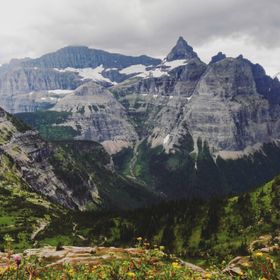

peterzelinka
Follow
The Bahamian island of San Salvador has some of the darkest skies in the Caribbean. Every night, students climb to the top of "the observatory" and s...
Read more
The Bahamian island of San Salvador has some of the darkest skies in the Caribbean. Every night, students climb to the top of "the observatory" and stargaze. There are plenty of shooting stars to see, and the Milky Way shines bright overhead
Read less
Read less
Views
961
Likes
Awards
Member Selection Award
Featured
Peer Award
Absolute Masterpiece
Superb Composition
Outstanding Creativity
Top Choice
All Star
Magnificent Capture
Superior Skill
Top Ranks
Same photographer See allBehind The Lens
Behind The Lens
Location
I took this photo on San Salvador, a beautiful island in the Bahamas. San Salvador is believed to be the first island that Christopher Columbus landed on as he was traveling across the ocean. To capture this image, I hiked up to the Northern-most point on the island where we like to stargaze. The old structure seen here is the perfect spot to lay out and watch the stars from.Time
To get this shot I had to wake up at 3am and venture out into the darkness. While everyone else was sound asleep, I began my trek to North Point. I arrived by 4am and started scouting out different angles to capture the Milky Way. By 4:30am everything was finally in place and I was able to get the photo. There's nothing like standing under a sea of stars, completely alone, while everyone else is sound asleep in a comfy bed. You really feel alive.Lighting
I was a bit disappointed by the amount of light pollution coming from the small town to the south, which only has about 2 or 3 dozen homes. One of the main reasons I came to the Bahamas on this particular trip was to avoid the light pollution that plagues the Eastern US. It's unfortunate to see how our skies around the world are becoming filled with light pollution.Equipment
This photo was taken with a Nikon D750 and a Rokinon 14mm.Inspiration
I had been to San Salvador 3 times prior to this trip. At my university, Youngstown State, there is a class that brings Archaeologists, Geographers, and Geologists down to the island for 2 weeks each December and March. Knowing this would be my final trip to San Salvador, I really wanted to capture some amazing photos of the island. This was also the first time I had visited in March, which meant the Milky Way would finally be visible! One of the most beautiful locations on San Sal is North Point, which has a calm bay on one side and a raging ocean on the other. Perched atop the peninsula is this old structure. Inside is a cargo net that acts as a ladder to the top. From this vantage point you have the perfect stargazing spot. I wanted to include that structure in the image, since all the other students would instantly recognize it. With the Milky Way overhead, I think it makes the perfect shot of a night under the stars on San Salvador.Editing
Since I shoot in RAW I have to post-process every single photo I take. This has helped me really develop my own style over the past 2 years, as I learn more about photo editing. Milky Way images straight out of the camera are very flat and boring, it takes quite some time to make them look interesting. For this particular photo my main goal was to reproduce an accurate Milky Way color, something I always had trouble with. Using a variety of tools in Photoshop and Adobe Camera RAW I was able to bring out the natural colors in the Milky Way and brighten it a bit so that it become the focal point of the image.In my camera bag
I always have my Nikon D750, Lee Filters (Big Stopper, Little Stopper, Landscape Polarizer), tripod, rocket blower, remote shutter, extra battery, and 3 lenses. I usually have my Nikon 24-70, Tokina 100mm, and Rokinon 14mm with me.Feedback
Milky Way photos are surprisingly easy to capture, provided you know the proper camera settings. The difficulty comes in finding an interesting foreground, minimal light pollution and clear dark skies. It's crucial to shoot in RAW when photographing the Milky Way, as this will give you complete control over your image. I would argue that knowing how to edit a Milky Way photo is incredibly important to creating a captivating image. To learn more about Milky Way photography, you can check out my tutorial over at: www.peterzelinka.com/astrophotography





















